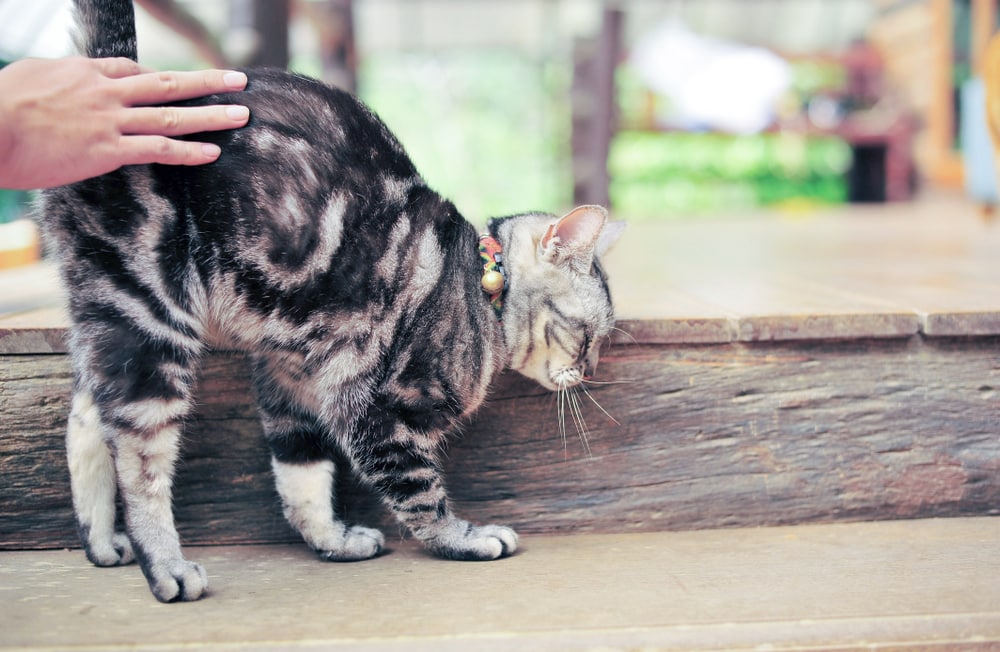Are String of Pearls Toxic to Cats? Keeping Your Pet Safe

Updated on
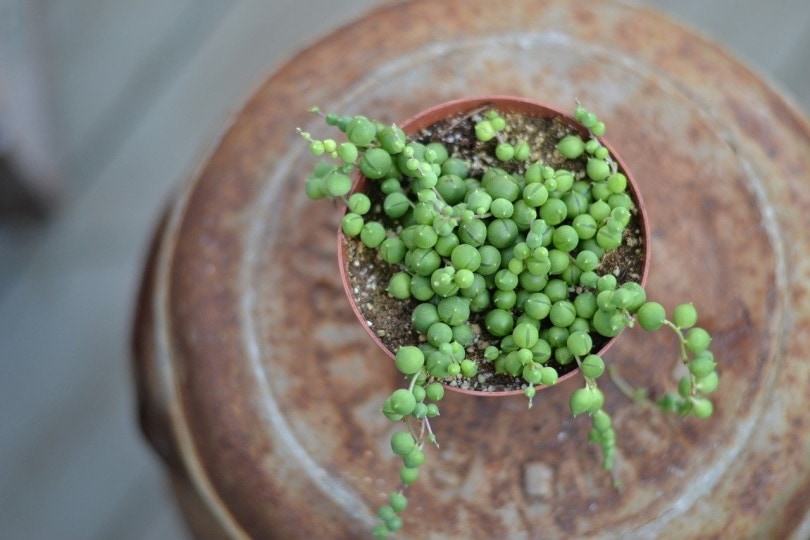
The String of Pearls plant is an attractive succulent vine native to Southwest Africa. Also referred to as String of Beads, the species has become a popular houseplant due to its ease of care. Unfortunately, String of Pearls is toxic to cats, dogs, and humans. Cats are unlikely to eat large quantities of the plant but ingesting the leaves or stems can cause lethargy and vomiting. The leaves also contain a sap that can irritate the skin of pets and humans.
Although the Pet Poison Helpline lists the String of Pearls as toxic and the ASPCA includes it in an article on poisonous succulents, the String of Pearls is not included on the ASPCA’s list of toxic plants.1 The ASPCA list does not include every plant that can cause an adverse reaction with pets but primarily consists of the most common indoor and outdoor varieties.2 While it’s not as hazardous to cats as lilies or Sago palms, it’s best to keep your animals away from the beady plant.
Other Succulents That Are Toxic to Cats
Most succulents are desert plants that can survive several weeks without water. They’re ideal houseplants for beginner gardeners and those without a green thumb. Depending on the species, you can usually keep succulents alive with a monthly watering and a few hours of indirect sunlight. Several succulents are entirely safe for your cat, but the following plants should stay outside (for indoor cats only) or be donated to a friend.
String of Pearls
(Senecio rowleyanus)
The sap from the String of Pearls is an irritant to humans and other mammals, and it would not be difficult for your furball to release the liquid by batting it with sharp claws or chewing on it. Some gardeners have suggested hanging the plants to keep them out of reach from pets, and most planters suspended from the ceiling should be safe. However, the stems can fall to the ground if the plant is overwatered or does not receive enough sunlight. Moving the String of Pearls outdoors may be the best option in warmer temperatures, but it cannot tolerate temperatures below 45° F for very long.
Pencil Cactus
(Euphorbia tirucalli)
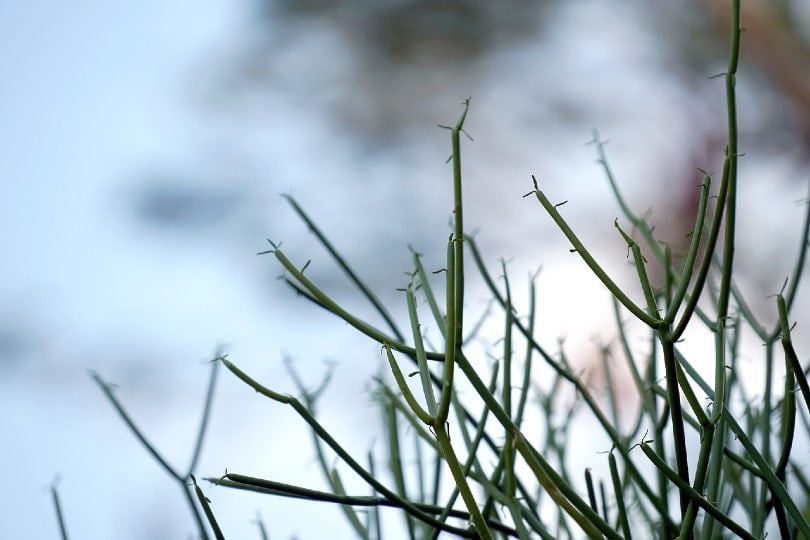
The name “Pencil Cactus” is descriptive but slightly misleading. As a Euphorbia, the Pencil Cactus is a succulent and not a true cactus. However, the chameleon-like stems, growing up to 6 feet high indoors, are shaped like wooden pencils. Like the String of Pearls, the Pencil Cactus contains a milky sap that can harm your pet.
This is one of the most toxic plants in the Euphorbias. When the fluid is consumed, it can cause vomiting and drooling, but contact with the eyes can cause swelling, redness, and even corneal ulcers. The stems will change color in cooler months, but it’s unclear whether its nickname, “Sticks on Fire,” describes the stem’s color or corrosive sap. The Pencil Cactus is part of the Euphorbia genus, and veterinarians recommended keeping all species from the genus away from your pets, including the holiday favorite poinsettia.
Aloe Vera
(Aloe barbadensis)
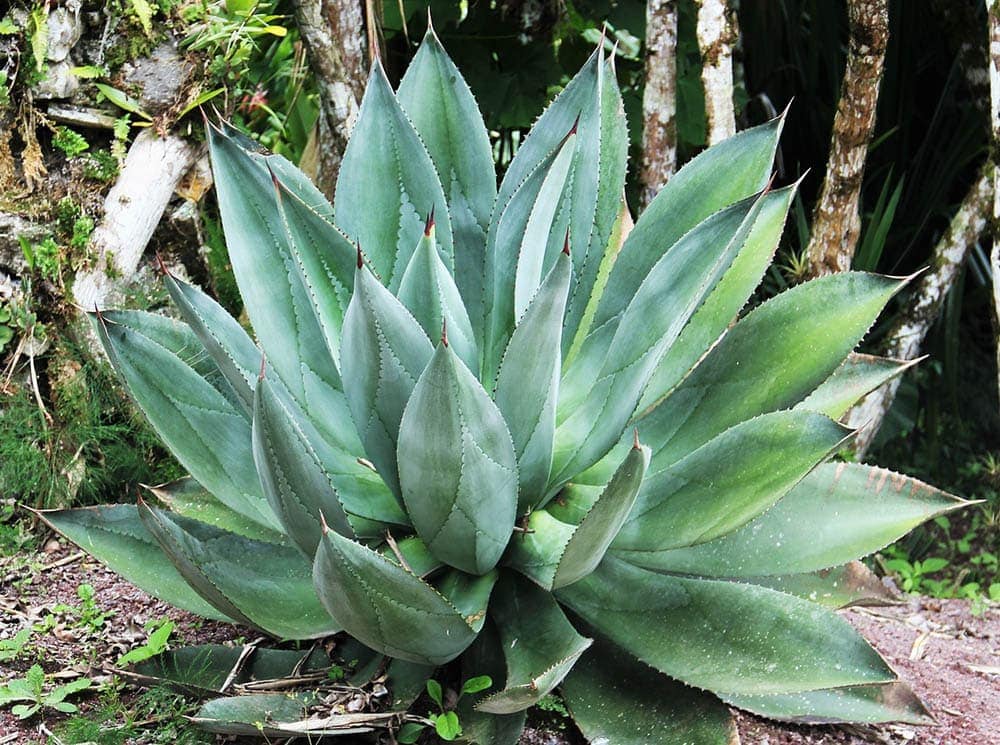
While it’s gel is soothing on sunburns and minor cuts, Aloe Vera can cause problems in cats. Aloe Vera’s most common variety has long spiked green stalks, but even the white-spotted types are dangerous to cats. The species contain components called saponins that can cause diarrhea, lethargy, and vomiting in cats and dogs.
Jade
(Crassula ovata)
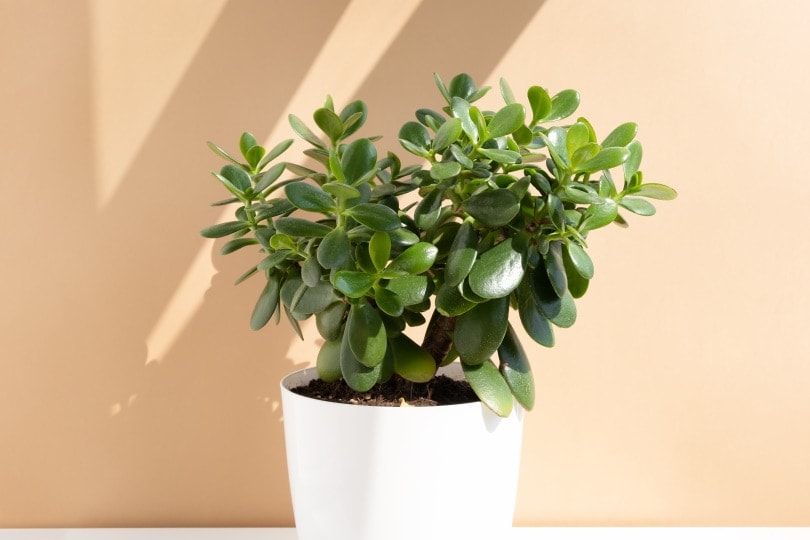
Another popular species displayed indoors is Jade. When planted indoors, Jade plants can reach 3 feet high, and their impressive lifespan often leads homeowners to include them in their wills. Although your furball may be more likely to play with one of the fleshy leaves rather than consume it, it’s better to keep the plant away from your pet. A feline who consumes the plant could experience incoordination and gastrointestinal distress although risk of toxicity is low and some classify it as non toxic.
Mother in Law’s Tongue
(Sansevieria trifasciata)
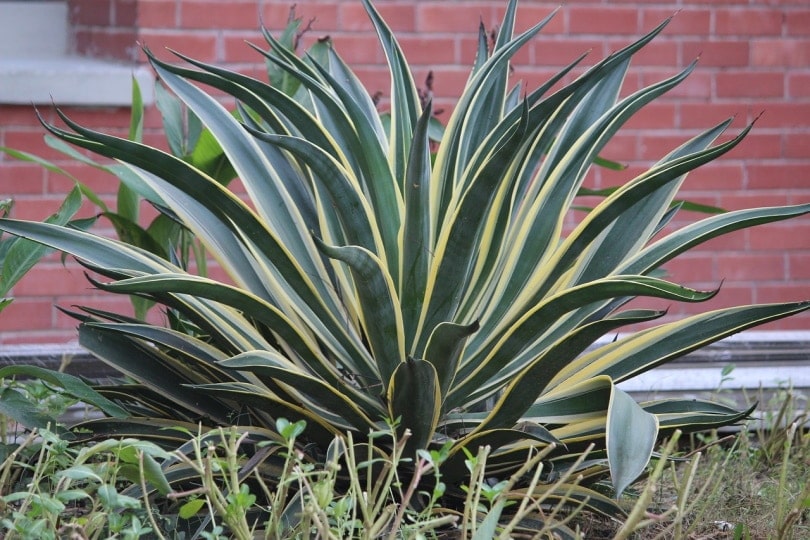
The Mother in Law’s Tongue is a West African native that’s a popular houseplant around the world. The long, sword-like leaves brighten any dull interior space, and most are displayed at ground-level in giant pots. It’s a great species for beginners if they do not own cats. If a cat ingests the plant, it can lead to vomiting, drooling, lethargy and diarrhea. Mother in Law’s Tongue is also toxic to dogs.
Non-Toxic Succulents That Are Safe for Cats
Cat guts are not designed to digest plant material as efficiently as animal proteins, and a cat may have an adverse reaction after eating non-toxic or toxic species. However, healthy cats who enjoy a well-balanced diet, adequate exercise, and plenty of attention are less likely to feast on houseplants. Since succulents are so beautiful, it seems unfortunate that you cannot keep many of them when you have pets, but here are a few that are safe for cats and dogs.
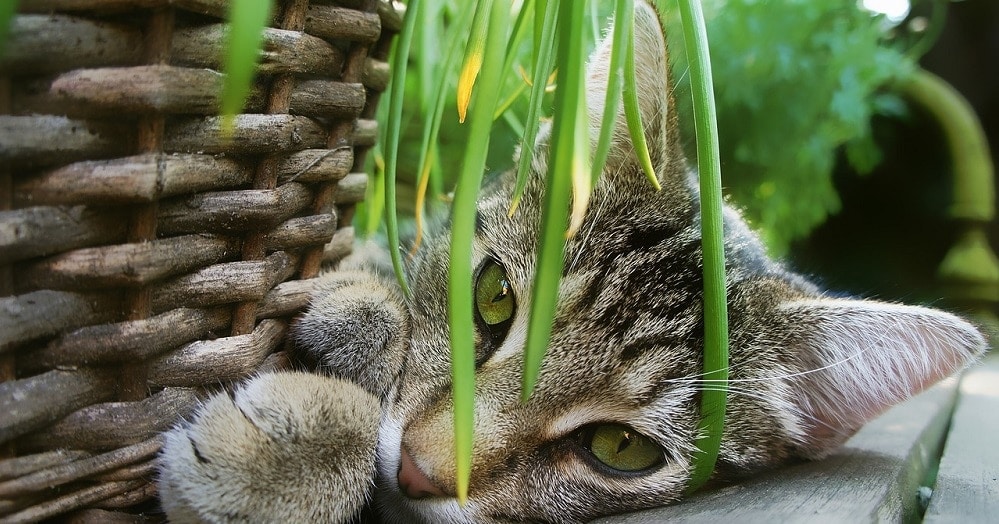
- Variegated Wax Plant
- Bunny Ear Cactus
- Hens and Chicks
- Chinese Money Plant
- Burro’s Tail
- Blushing Beauty
Although these succulents are non-poisonous, you should consult a veterinarian if your cat eats a large amount or displays troubling symptoms after nibbling on the plants.
Protecting Your Cat and Non-Toxic Plants
Most cats can live in the same home for their entire lives without nibbling on a toxic houseplant, but some species are too hazardous to keep in your home regardless of your pet’s behavior. If you have prized non-poisonous succulents and other cat-safe species in your home, you may need to prevent a destructive kitty from damaging or killing them.
Removing All Toxic Plants
Moving your toxic succulents outside and out of reach of a housecat may be feasible in warmer months, but most species cannot tolerate frost or low temperatures. They will need to go into a greenhouse or be brought back inside during colder months. Removing dangerous plants is the only way to keep your pet 100% safe. You can donate the succulents to a friend or a local gardener instead of throwing them away.
Keeping Plants in a Secure Room
If your cat frequently attacks or bites your favorite plants, you can move them to a room in your home your cat cannot access. A sunroom or screened porch are possible locations if your pet cannot open doors. Some cats can stand on their hind legs or jump up and turn door handles.
Moving Plants to Elevated Positions
Keeping your succulents in hanging baskets can prevent your cat from meddling, and you can also display them on high shelves and mantels. If your pet has a cat tree or indoor cat run, it’s wise to move the plants away from these structures to prevent them from climbing up to them.
Bookmark the ASPCA List
The list of plants toxic to cats is enormous, but you can bookmark the site on your phone, so you’ll have easy access when you visit the garden center or nursery. Without a reliable reference, you might pick toxic plants that you’ll have to discard or donate when you discover the species are unsafe.

Final Thoughts
The String of Pearls is a fascinating succulent that adds color and interest to any home, but it’s not safe to have around your furry friend. The sap can irritate the skin of humans and their feline friends, and every part of the plant is toxic to cats if it’s ingested. Luckily, several gorgeous succulents are safe to display and do not cause medical issues when eaten by pets.
See also:
- Are Snake Plants Toxic to Cats? Keeping Your Cat Safe
- Can Cats Eat Spider Plants? Vet-Reviewed Safety Facts
Featured Image Credit: Veronicatxoxo, Pixabay







